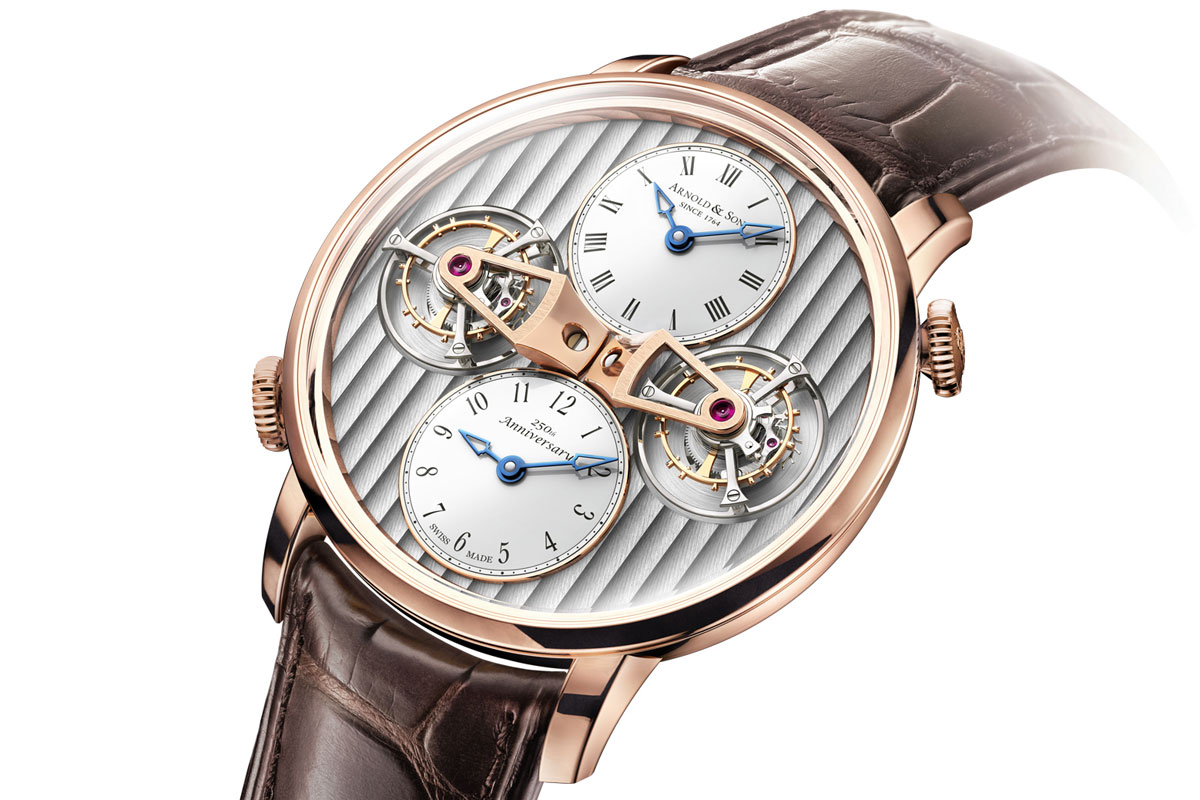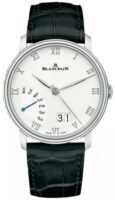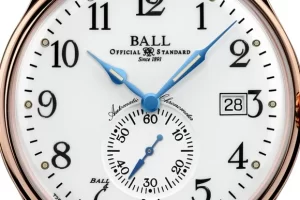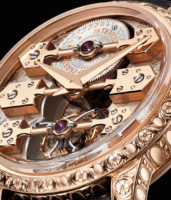












John Arnold is an English watchmakers who born in 1736 and died in 1799. His reputation established as a fine watchmaker when he set
up a chronometer factory at Chigwell In 1756 and this give him the credit to be
the first watch maker to design a watch that was both practical and accurate.
Here is about him from Arnold and
son website
http://www.arnoldandson.com/home/history.aspx
A finger on the pulse of his time
John Arnold was born in Cornwall in
1736. His father was a watchmaker and his uncle a gunsmith, which probably
explains his early interest in precision engineering and metalwork. A talented
craftsman and scholar, he left England for the Netherlands at the age of 19
after completing his apprenticeship to hone his watchmaking skills. He returned
two years later speaking excellent German, which stood him in good stead later
at the court of George III, and had established himself as a watchmaker of
repute in London’s Strand by his mid-twenties.
After Arnold presented the smallest
repeating watch ever made to King George III and to the court, he rapidly
acquired a wealthy clientele. He was one of the most inventive watchmakers of
his day and held patents for a detent escapement, bimetallic balance and
helical balance spring . Arnold’s “No. 36” was the first timepiece to
be called a chronometer, a term reserved for unusually precise watches to this
day.
Arnold also played a central role in
the events of his day. Along with other watchmakers, he addressed the problem
of determining longitude, and won several grants and awards offered by the
British Parliament. He enjoyed such respect in his profession that he became a
close friend of Abraham-Louis Breguet. They exchanged ideas and even entrusted
their sons to each other for their apprenticeships.
This is a story worth telling.
Starting with this catalogue, we shall look at some of the achievements that
assured John Arnold and his son of their place in watchmaking history.
Following with
the stories, we shall read how his
timepieces accompanied famous explorers on their voyages of discovery, helped
the East India Company establish its empire and how Napoleon Bonaparte himself
presented an Arnold clock to the Observatory of Milan in 1802.
1736
John Arnold is born in Cornwall. At
the age of 19, after completing an apprenticeship as a watchmaker with his
father, he leaves for the Netherlands, where he learns German.
1762
John Arnold opens his first
workshop, in London’s Strand, and gains immediate recognition when he repairs a
repeating watch owned by William McGuire, a renowned watch connoisseur.
1764
John Arnold makes a ring containing
a half-quarter repeater, which he presents to King George III, and instantly
creates a wealthy clientele.
1770
John Arnold presents his first
marine chronometer to the Board of Longitude. Impressed by the watch’s quality,
the Board promptly awards him a grant of £ 200, the first of many he is to
receive.
1771
Admiral Harland uses the first
Arnold chronometer on his voyage to Madagascar.
1772
Arnold’s No. 3 chronometer is aboard
when Captain Cook sets out on his second voyage to the Pacific.
1773
Following the invention of a detent
escapement and other significant design improvements, John Arnold builds his
first pocket chronometer (No. 8).
1773
Captain Phipps chooses an Arnold
chronometer for his voyage towards the North Pole.
1775
John Arnold is awarded patents for
the helical spring and an improvement to the bimetallic balance.
1778
John Arnold creates a minor storm in
precision timekeeping with the Arnold No. 36. The timepiece reviewed at
Greenwich is applauded for its precision. Following this success, Arnold
advertises his achievement with a document in which he calls the timekeeper a
“chronometer”, a term used to this day to denote a supremely accurate
timepiece.
1780
An Arnold astronomical pendulum
clock is installed at the Observatory of Mannheim, Germany.
1780
The Board of Longitude presents
Arnold’s chronometer No. 2, declaring it superior to all those produced
previously.
1782
John Arnold is granted patents for
helical spring terminal curves, a spring detent and epicycloidal teeth.
1788
An Arnold chronometer is used by
George Robertson to chart the China Sea.
1792
His son, John Roger Arnold, studies
in Paris for two years under his father’s friend, Abraham-Louis Breguet.
1792
Arnold’s No. 4 chronometer is the
instrument of choice for Captain George Vancouver’s voyage to America’s west
coast.
1794
Arnold’s No. 64 chronometer
accompanies Captain Thomas Butler on his voyage to China.
1796
John Roger Arnold joins his father’s
firm. Arnold & Son quickly becomes the leading supplier of timepieces to
the Royal Navy.
1799
John Arnold dies.
1802
Napoléon Bonaparte offers an Arnold
astronomical clock to Milan Observatory.
1806
Baron Von Krusenstern takes two
Arnold chronometers (Nos. 128 and 1856) with him for his circumnavigation of
the world.
1808
In reverent memory of John Arnold,
Abraham-Louis Breguet presents his son, John Roger, with his first tourbillon
escapement, mounted in one of Arnold’s first pocket chronometers. Today, this
exceptional watch is a highlight of the British Museum’s collection in London,
and bears a personal inscription.
1818
Two Arnold chronometers (Nos. 25 and
369) accompany Captain John Ross on his voyage to Baffin Bay.
1820
John Roger Arnold is awarded a
patent for his keyless winding system.
1820
Arnold’s No. 2109 chronometer goes
with Captain Edward Perry on his voyage toward the North Pole.
1821
John Roger Arnold receives a patent
for the “U”-type balance.
1830
John Roger Arnold and Edward John
Dent (another London clockmaker) finalize a 10-year partnership contract.
1843
John Roger Arnold dies and ‘Arnold
& Son’ is repurchased by Charles Frodsham.
1845
Sir John Franklin sets out with a
crew of 130 to chart the infamous Northwest Passage in the Canadian Arctic. On
board is an Arnold chronometer (No. 294). The expedition is a disaster and no
one survives. Rediscovered over 150 years later, the chronometer is found to be
so extensively modified that it is virtually unrecognizable. How it found its
way back to the UK remains one of the greatest mysteries of watchmaking.
1857
Arnold & Dent’s No. 4575
chronometer accompanies Dr David Livingstone on his expedition to South Africa.
Please remember that this is an unofficial account of the history of this
company, Should you happen to find any mistakes with our information then
please let us know at



